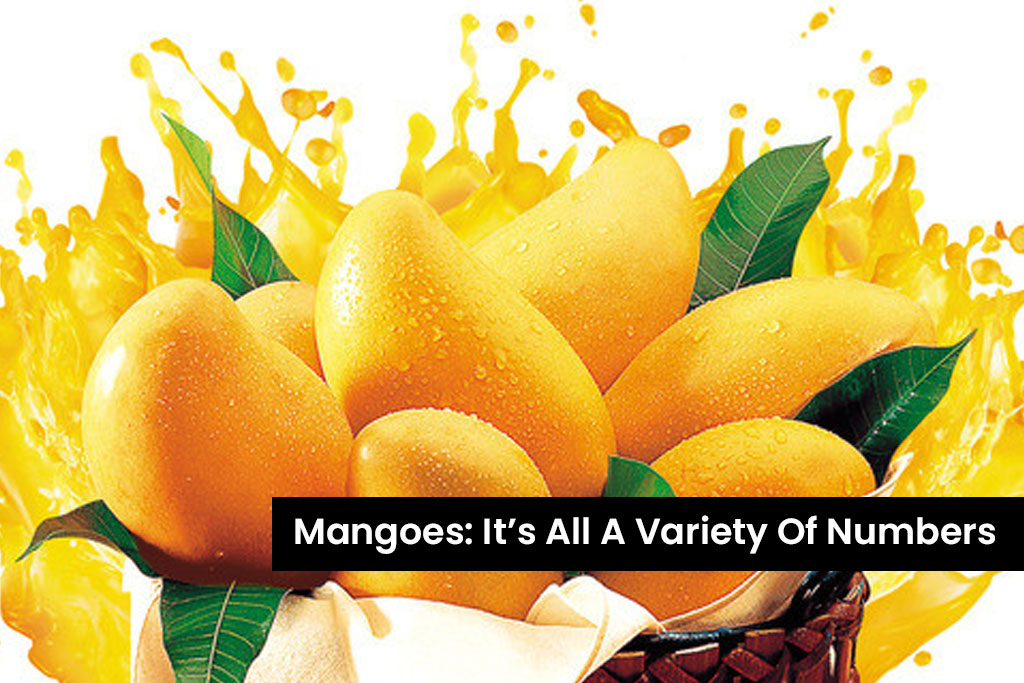Mangoes: It’s All A Variety Of Numbers

As much as we don’t like it, there are certain clichés which just hold true, no matter what. Mango being the king of fruits is one of them. In India, this fruit is cultivated in an area of about 2312 thousand ha and production is about 15.03 million tonnes contributing to about 40.48% of the total mango production in the world. What makes for this huge number of mangoes is not just the conditions which make such large cultivation possible, but also variety. Any time you go shopping for mangoes during the season, you cannot just go and demand it. You have to be really specific about which type of mango you want and if your knowledge about mangoes is really applause worthy, then you will also throw in the region you want the mango to be from. Delhi, Mumbai, Kolkata, Uttar Pradesh; you can name drop any state you want and they will have a particular mango variety to their name. Along with a particular way of eating it. Most people in Maharashtra and Gujarat love ending their meals with Aamras in the summer which is traditionally made with Alphonso or Kesar mango while most of North India swears by Langda, Safeda, Dussehri and the Deccan region boasts about Banganpalli. Here’s a guide to the varieties of mango found in India and the subtle difference between them so that you can choose the one to your liking:
Banganpalli: From April to June, this mango variety is one of the earliest to hit the market. This variety of mango is quite fibreless and a little bit sour with bright yellow hue on the skin.
Payri: You won’t really have an issue identifying this mango as the skin's reddish tinge gives it away. While this Payri Mango is not sickly sweet, it is certainly sweeter compared to others and has only a wee bit of sourness hidden somewhere.
Neelam: This one is kind of available throughout the season, but the best ones are available during June. It emits a lovely fragrance and is quite the rage in Hyderabad.
Alphonso: It does not really necessitate an introduction. This is one variety of mangoes which although native to Maharashtra is the most popular across the country. Most people claim Alphonso (Hapus) to be the tastiest amongst all the varieties found in India.
Dussheri: Or more colloquially known as the ‘chusnewaalaaam' is the one mango variety that is extremely popular amongst the younger population because of the fun way of consuming it: tearing off the tip and sucking the pulp and juice. Dasheri Mango is mostly native to Uttar Pradesh.
Kesar: Its smell is the most distinguishing feature and if your kitchen smells a lot like mangoes then there is a huge possibility that it’s filled with Kesar mangoes. The colour of the pulp resembles the saffron colour and is most popular in Gujarat.
Langda: There is still a debate about the origins of the name. But ultimately what wins is the taste. Originating from the lands of Varanasi, this fibrous mango is a household name in most of West Bengal, Haryana and Bihar.
Malda: this is more popular in the region where it is grown: Bihar. It’s extremely thin skin and sweet taste makes it a first choice amongst the locals.
The overflow of taste in mangoes and its periodic availability makes it the favourite amongst the fruit loving population. But there has been recent hesitation regarding the buying of mangoes with the rampant news of high quantities of chemicals and pesticides. To ensure that no one needs to compromise on their love for mangoes, the organic variety of this royal fruit is slowly doing the rounds. Organic Alphonso, Organic Kesar, Organic Langra, Organic Dussehri, Organic Payri; all of them are available which does not cause any harm to your health and does not compromise on taste either. You can look for organically grown mangoes on Orgpick, your friendly neighbourhood organic food delivery service.


